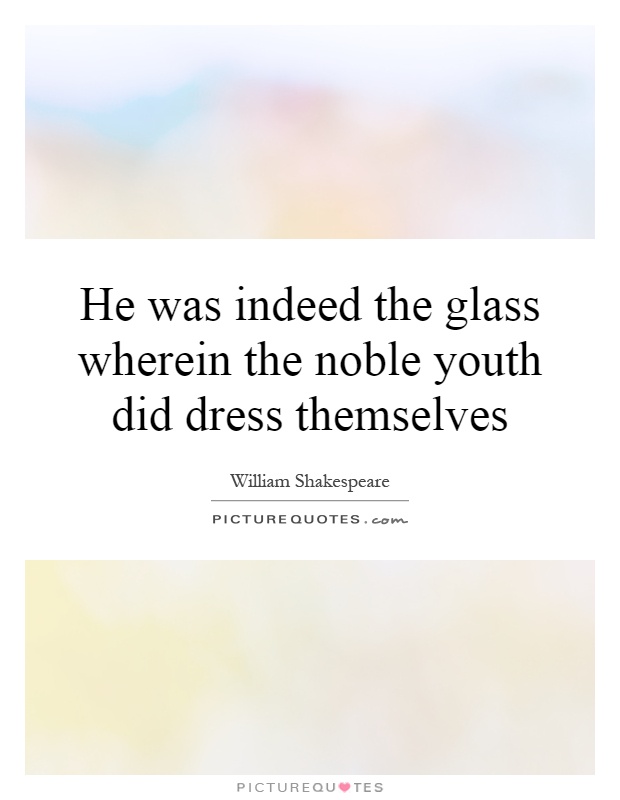He was indeed the glass wherein the noble youth did dress themselves

He was indeed the glass wherein the noble youth did dress themselves
In the world of William Shakespeare's plays, the characters often serve as mirrors to one another, reflecting back the qualities and characteristics of those around them. One such character who embodies this idea is the Duke of Florence in "All's Well That Ends Well." In Act 1, Scene 3, the Countess of Rousillon describes the Duke as "the glass wherein the noble youth did dress themselves," highlighting his role as a model of virtue and nobility for the younger generation.The Duke of Florence is portrayed as a wise and just ruler, respected by all who know him. His court is a place of order and decorum, where the laws of the land are upheld and justice is served. He is a man of integrity and honor, and his subjects look up to him as a paragon of virtue.
The Duke's influence extends beyond the walls of his court, as he serves as a mentor and role model for the young men of his kingdom. They aspire to be like him, to embody the same qualities of wisdom, courage, and compassion that he possesses. In this way, the Duke is not only a ruler but also a teacher, guiding the next generation of leaders on the path to greatness.
The phrase "the glass wherein the noble youth did dress themselves" suggests that the Duke is a reflection of the noble qualities that the young men aspire to embody. Like a mirror, he shows them what it means to be truly noble, inspiring them to strive for excellence in all that they do. His example serves as a guide for them, showing them the way to become the best versions of themselves.












 Friendship Quotes
Friendship Quotes Love Quotes
Love Quotes Life Quotes
Life Quotes Funny Quotes
Funny Quotes Motivational Quotes
Motivational Quotes Inspirational Quotes
Inspirational Quotes